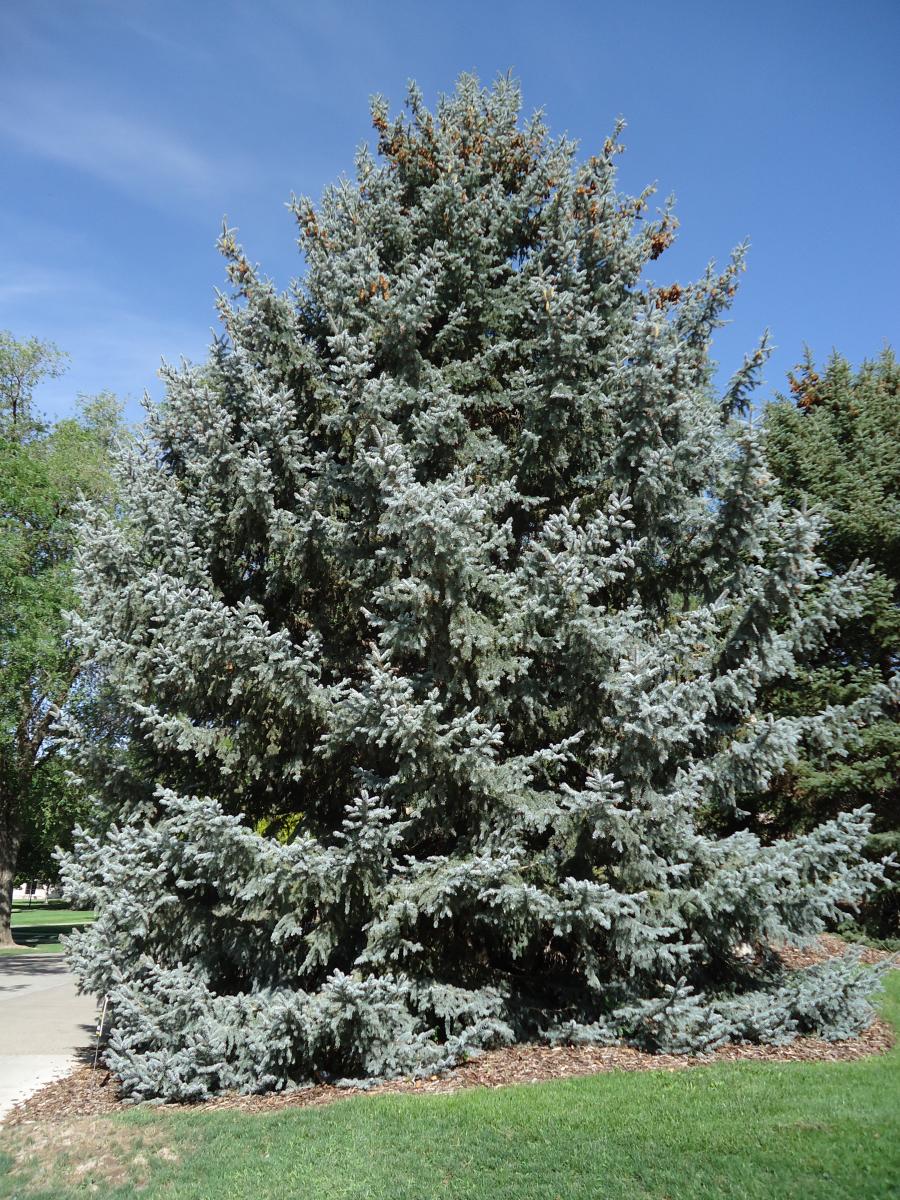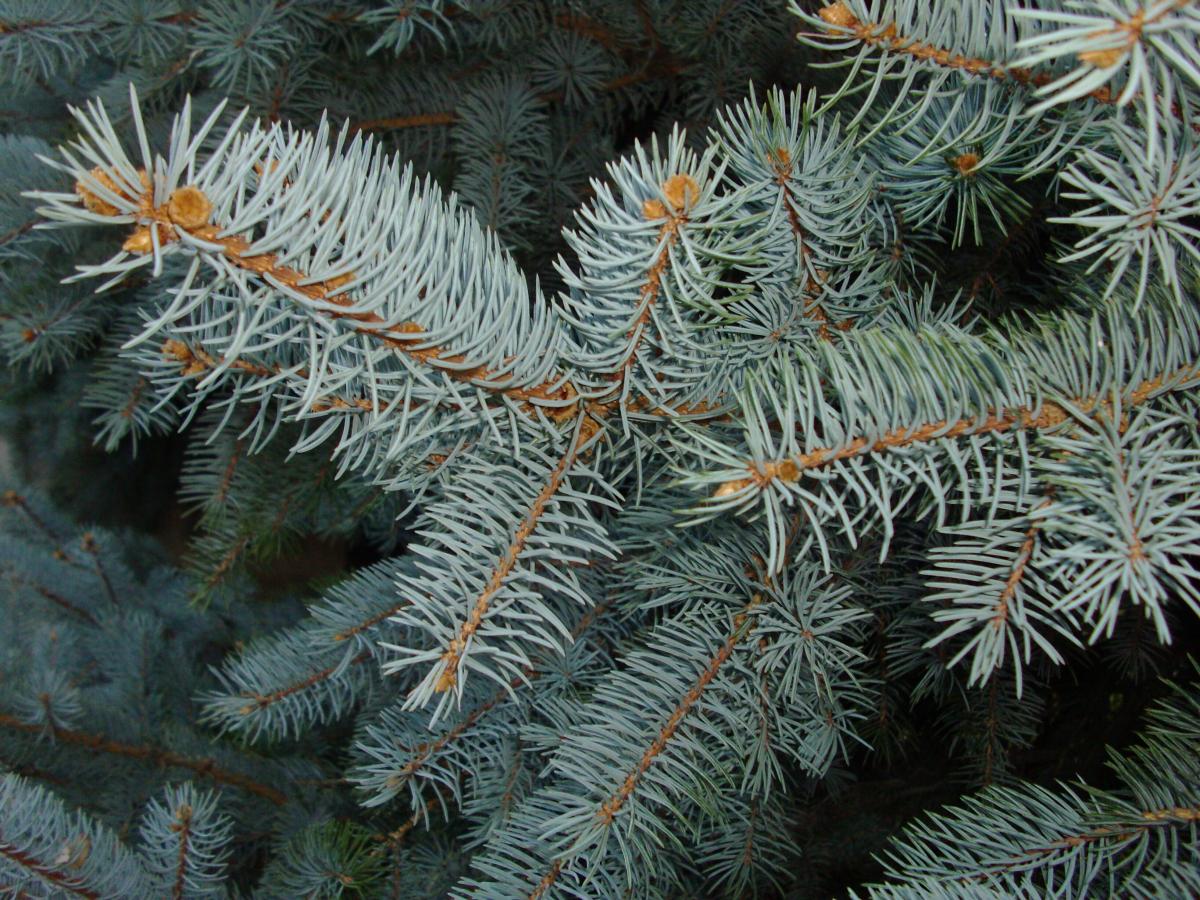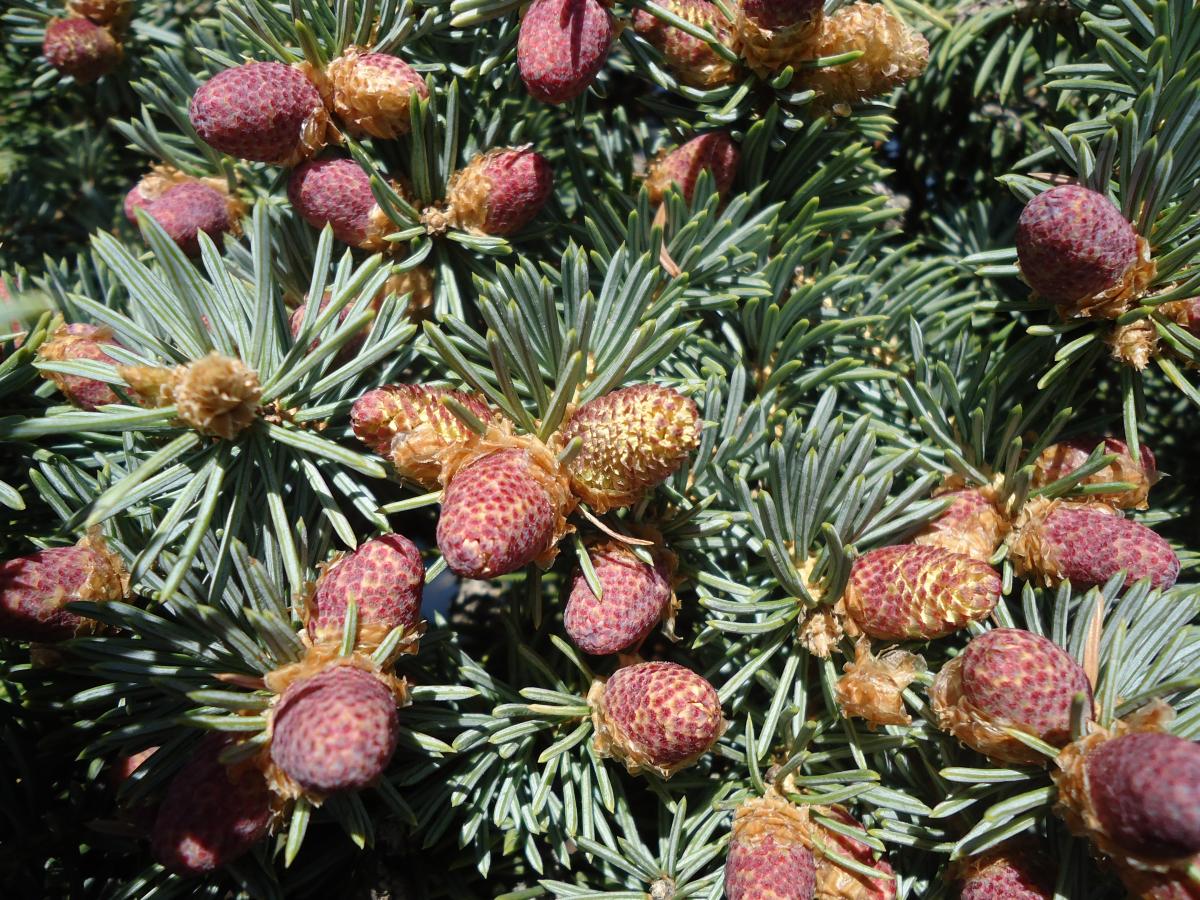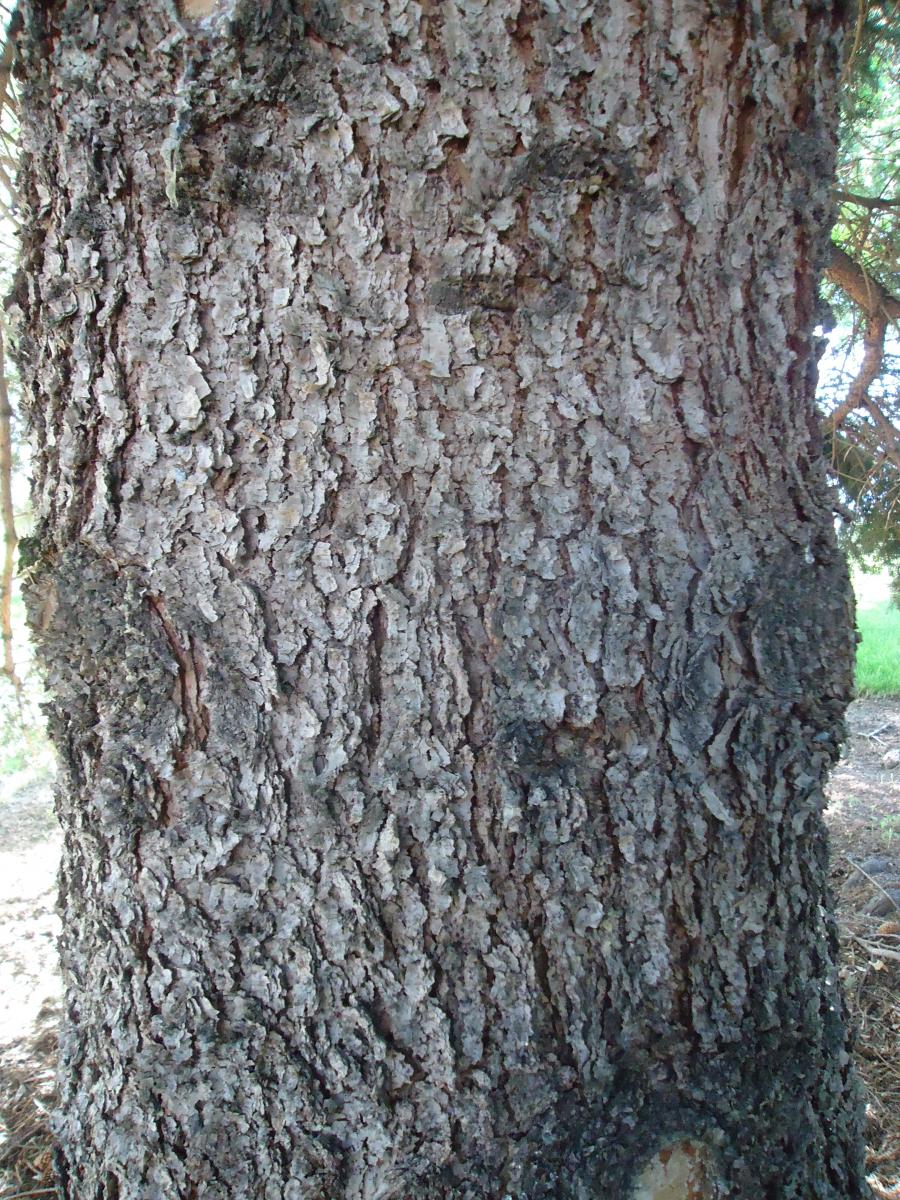Blue Spruce





Picea pungens
Leaves: Evergreen. Needles are 4-sided with a diamond-shaped cross section and reach ¾ to 1¼ inches. Very stiff and sharp, needles grow on all sides of the branches. Fragrant when crushed. Varies from blue-green to silvery-green color.
Bark/Twigs: Light to dark gray bark. Bark is made of grey-black, layered scales. Deep fissures develop in older trunk.
Flowers/Fruit: Inconspicuous flowers during late spring. Light chestnut-brown cones are 2 to 4 inches long by 1 to 1½ inches wide and papery. Cone scales have ragged edges and are toothed at the tip.
Mature size and shape: Large. 30 to 60 feet high x 10 to 20 feet wide. Grows much larger in nature. Densely pyramidal shape with horizontal branching all the way to the ground. Trees become less dense with age.
General information/special features: Plant in full sun. Moderately shade tolerant. Prefers moist, well-drained, slightly acidic soils. Moderately drought tolerant. Hot dry winds and extreme heat are problems. Over-watering will lead to rapid decline and slower growth. National champion is 122 feet by 36 feet in Ashley National Forest, UT.
Landscape use and maintenance: Originally Utah's official state tree prior to 2014. Use as a specimen or in groups. Makes a good windbreak and visual or sound screen. Slow to medium growing rate. Low maintenance.
USDA Hardiness Zone: 2 to 7
Family/Origin: Pinaceae – Pine. Native to Utah, the Rocky Mountains and Intermountain states.
Campus Use: Extremely common. Can be found on east side of President's Circle and north of the Bookstore (Bld 67).
